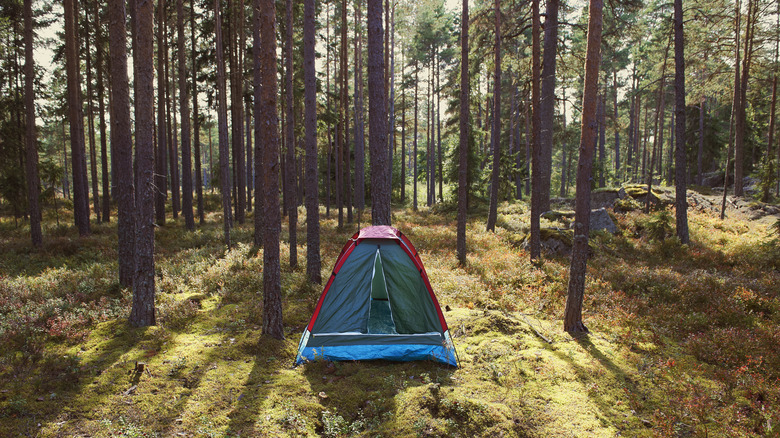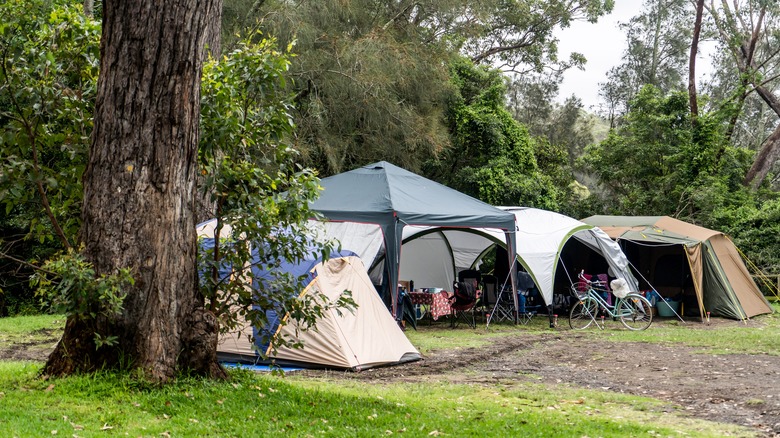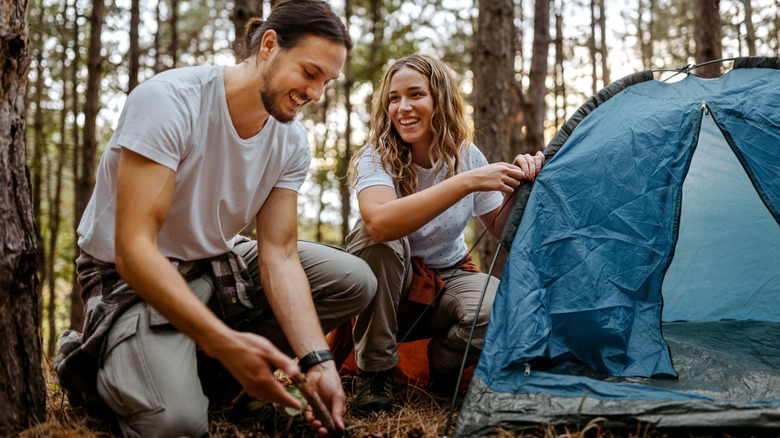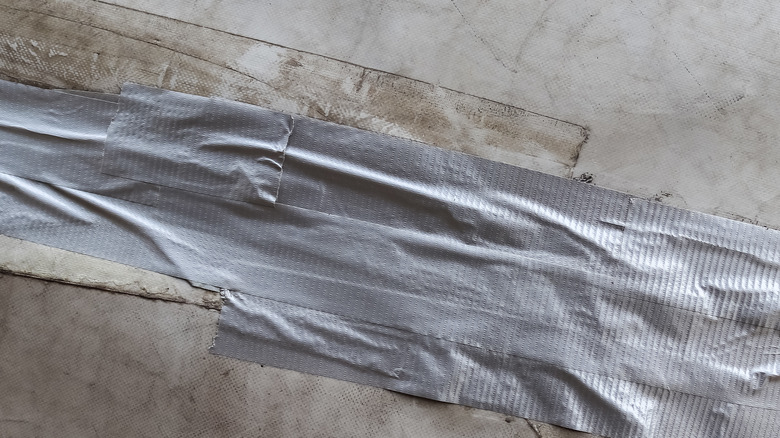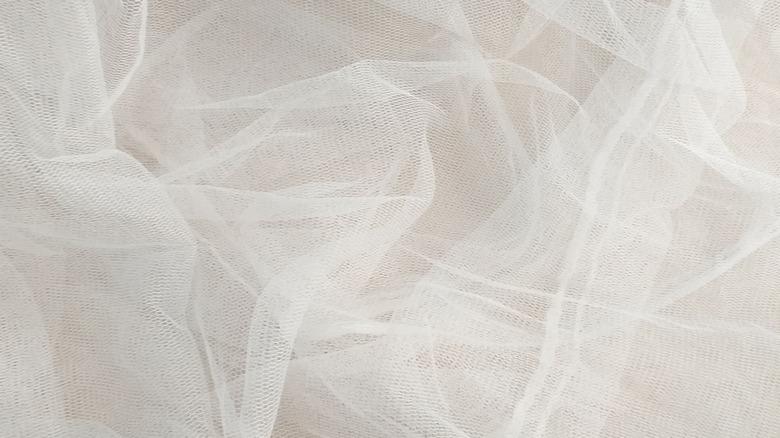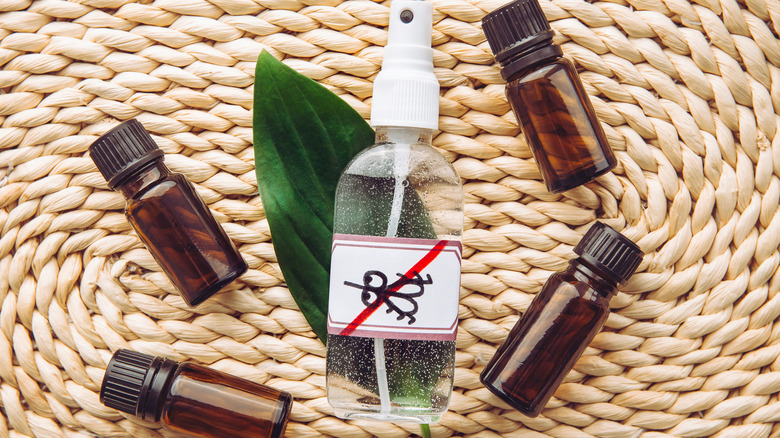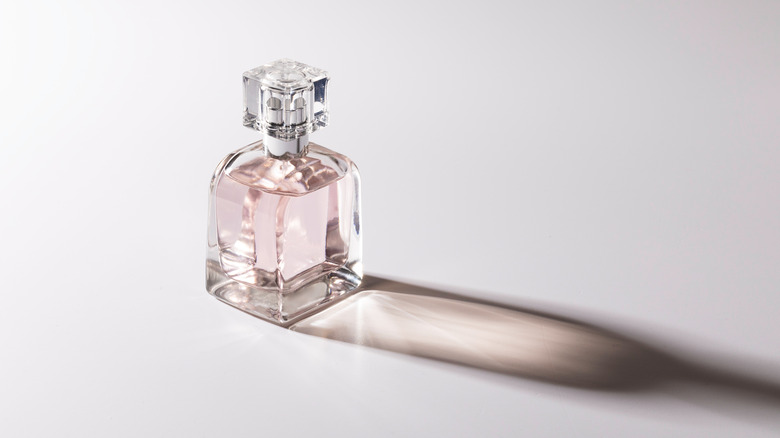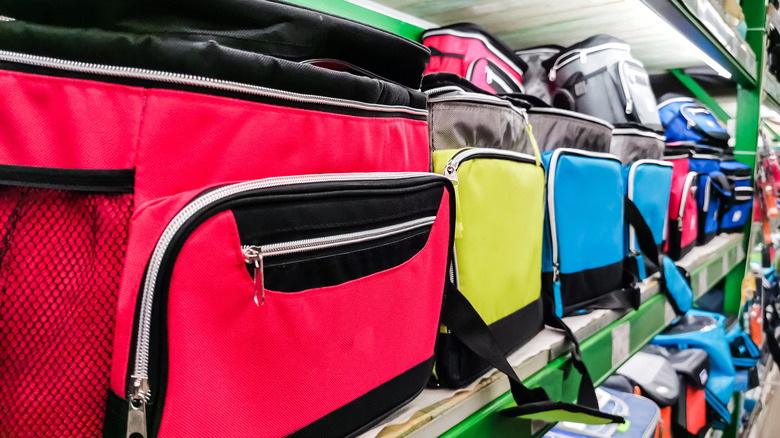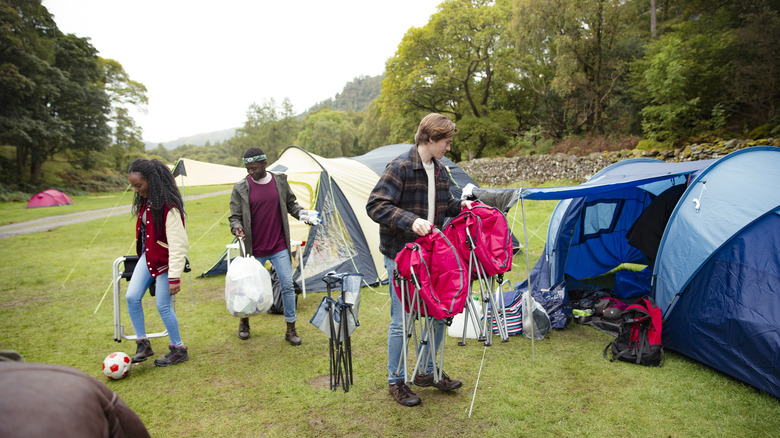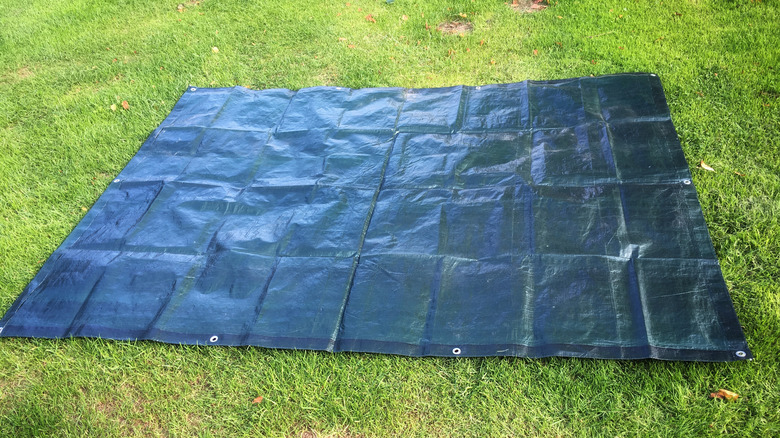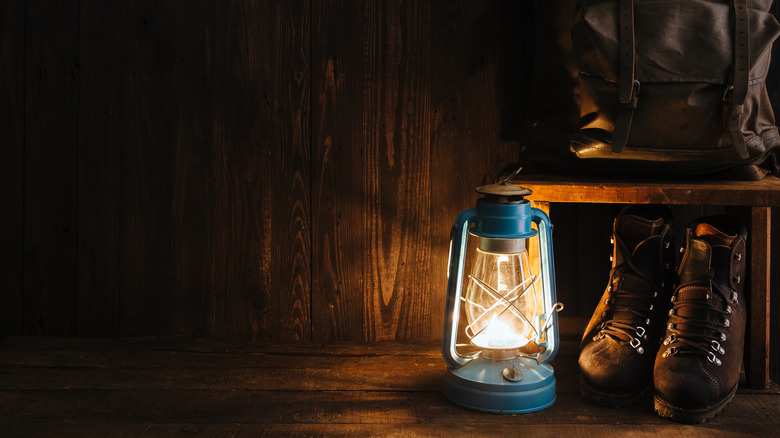Top Tips For Keeping Bugs Out Of Your Tent
As the sun dips below the horizon and the stars begin to twinkle overhead, there's nothing quite like settling into your cozy tent for a night under the open sky. However, the tranquility of camping can quickly be disrupted by the unwanted presence of bugs. Mosquitoes buzzing in your ears, ants marching across your sleeping bag, or spiders lurking in the corners of your tent can turn an idyllic camping trip into a nightmare. But fear not, fellow outdoor enthusiasts, for there are numerous strategies you can employ to keep bugs at bay and ensure a peaceful night's sleep amidst nature's splendor.
Today, we'll explore the top tips for keeping bugs out of your tent, offering practical advice and scientific insights to help you navigate the wilderness with confidence. So, whether you're a seasoned outdoor enthusiast or a novice camper, read on to discover how you can keep bugs at bay and make the most of your time in the great outdoors. With these tips in your arsenal, you'll be well-equipped to fend off unwanted insect intruders and enjoy a peaceful night's sleep under the stars.
Choose the right location for your campsite
Selecting the perfect campsite isn't just about finding a picturesque spot with a stunning view; it's also about strategically warding off unwanted guests — bugs. Imagine a spot bathed in dappled sunlight, with a gentle breeze rustling through the trees. This is the ideal bug-proof location. Away from stagnant water sources that attract mosquitoes and other water-loving insects and far from dense vegetation where bugs can easily hide and thrive lies your sanctuary. Dynatrap recommends open areas or higher ground that offer natural ventilation, discouraging insects from congregating near your campsite.
But wait, there's more to consider! Seasonal factors play a significant role in bug activity. In the warm embrace of summer, mosquitoes and other flying insects are often at their peak, making proper campsite selection even more critical. Come autumn, as the temperatures begin to drop, bugs may not be as bothersome, but other critters like spiders and ants may seek refuge in warmer environments. Choosing a campsite away from leaf litter and fallen branches can help minimize encounters with these unwelcome guests. In winter, bugs may seem like a distant memory, but it's essential to remain vigilant. Some insects, like ticks, remain active even in colder temperatures (via Tick Talk Canada). Selecting a campsite with minimal ground cover and avoiding areas frequented by wildlife can reduce the risk of tick encounters.
Set up camp early
Setting up camp early not only ensures that you have ample time to settle in and enjoy your surroundings but also plays a strategic role in keeping bugs at bay. Flying insects like mosquitoes, moths, or some beetles are known as crepuscular animals (via Amateur Entomologists' Society), and they are more active during dusk and dawn. Some of these bugs double as nocturnal animals, so they are active overnight, emphasizing the utility of setting up and securing your tent early.
By setting up camp early and completing tasks before nightfall, you minimize the risk of attracting bugs to your campsite during their peak activity periods. Setting up camp early allows you to take advantage of natural daylight, reducing the need for artificial light sources after dark. As the evening approaches, bugs become more sensitive to disturbances in their environment, such as movement or noise, according to a 2017 study by the Philosophical Transactions of the Royal Society. By setting up camp early and minimizing disturbances during the evening hours, you create a more peaceful and bug-free atmosphere for relaxation.
Repair any tent damage promptly
Tents are designed to provide a protective barrier against the elements, including bugs. Any damage to the tent's fabric, seams, or zippers compromises its integrity and effectiveness in keeping bugs out. Insects, including mosquitoes, ants, spiders, and flies, can easily slip through even the smallest openings in your tent. Repairing any damage, even minor tears or holes in the fabric prevents bugs from entering your sleeping quarters and reduces the risk of insect bites or disturbances during the night.
Before heading out on a camping trip, check the condition of your tent's seams and fabric. Over time, wear and tear can lead to small tears or gaps that insects can exploit. Inspect your tent regularly and repair any damage promptly. If a tear occurs whilst already out and about, patch kits typically include adhesive or fabric patches that can be used to repair tent fabric. These kits may also include seam sealant or adhesive for added durability. If you don't have a patch kit, duct tape usually comes in just as handy, so try and keep some on you during camping trips.
In addition to keeping bugs out, repairing tent damage promptly helps prevent water intrusion during rainy or damp conditions. Moisture can attract bugs and create favorable conditions for insect activity inside the tent. By sealing any holes or tears in the tent fabric, you keep both bugs and water at bay, ensuring a dry and comfortable camping experience, and your tent will continue to provide a secure shelter during your outdoor adventures.
Seal all your tent entrances properly
Securing tent entrances isn't just about keeping the flap zipped; it's a crucial line of defense in the battle against bugs. Picture yourself nestled inside your cozy tent, the sounds of nature lulling you into a peaceful slumber when suddenly, a buzzing mosquito or a curious beetle finds its way in through an unsecured opening. To prevent such unwelcome interruptions, properly securing your tent entrances becomes paramount.
The zipper may seem like a simple mechanism, but it's your first line of defense against insect invaders. Ensure that all tent doors and windows are securely zipped shut when not in use, leaving no gaps for bugs to squeeze through. Even the smallest opening can invite unwanted guests into your sanctuary, so take the time to double-check and seal any potential entry points.
Be sure not to forget the spots campers often miss when securing their tents. The bottom edges of tent doors and windows are notorious weak points, prone to gaps and drafts if not properly sealed. Make sure to secure these areas tightly, using extra pegs or stakes if necessary to keep the fabric taut and close off any potential entry points for bugs. Another commonly overlooked area is the tent floor. While bugs may not be able to crawl through the fabric, they can still find their way through gaps between the floor and the ground. Use a groundsheet or tarp underneath your tent to create an additional barrier against crawling insects, ensuring a bug-free sleeping environment.
Use mosquito nets or built-in mesh screens
Mosquito nets have long been hailed as a reliable defense against mosquito bites and other flying insects. They have been found to reduce malaria transmission by up to 50% in areas with high mosquito-borne disease prevalence, according to a meta-study published in the International Journal of Environmental Research and Public Health. These fine mesh barriers work by creating a physical barrier that insects cannot penetrate. The fine mesh is small enough to prevent mosquitoes and other flying insects from passing through, effectively keeping them at bay. Additionally, treated nets, which are impregnated with insecticides, provide an added layer of protection by repelling or killing insects on contact.
In recent years, tents with built-in mesh screens have become increasingly popular as an alternative to traditional mosquito nets since they save you from having to carry extra gear. These tents feature mesh panels on windows and doors, allowing for ventilation while keeping bugs out. However, the efficacy of tents with built-in mesh screens in keeping bugs out largely depends on the quality of the mesh and the design of the tent, so be sure to read reviews thoroughly before making a purchase!
Use natural bug repellents
Using natural repellents can be an effective and eco-friendly way to keep bugs away. Natural repellents harness the power of botanical ingredients to deter insects without relying on synthetic chemicals. Not only are they often safer for humans and the environment, but they can also be just as effective as their chemical counterparts (via Healthline).
One example of a good natural bug repellent is citronella oil, derived from the leaves of lemongrass plants. Citronella's strong scent masks the odors that attract insects, making it difficult for them to locate their targets. Another natural repellent is eucalyptus oil, extracted from the leaves of eucalyptus trees. It can be applied topically to your body or diffused into the air to create a bug-free zone.
One of the significant advantages of using natural bug repellents is their minimal impact on human health and the environment. Unlike chemical repellents, which may contain potentially harmful ingredients such as DEET, natural repellents are derived from plant-based sources and are generally considered safe for use by adults, children, and pets. Additionally, natural repellents are biodegradable and less likely to accumulate in the environment, reducing the risk of pollution and harm to wildlife. Furthermore, some individuals may prefer natural repellents due to sensitivities or allergies to chemical ingredients. Natural repellents offer a gentler alternative for those with sensitive skin or respiratory conditions, allowing them to enjoy outdoor activities without the worry of adverse reactions.
Avoid wearing strong fragrances
Yes, you can use the power of scent to deter bugs, but the wrong scents might have the opposite effects. A study published in Agricultural Research has shown that bugs, particularly mosquitoes and other flying insects, are highly sensitive to scent and can be attracted to strong fragrances. Additionally, Mosquito Squad reports that mosquitoes are more attracted to individuals wearing floral or fruity perfumes compared to those wearing unscented products.
One reason bugs may be attracted to certain fragrances is their association with food sources. Many perfumes and fragrances contain ingredients derived from plants or fruits, which emit scents that bugs associate with food. For example, floral fragrances may mimic the scent of nectar from flowers, while fruity fragrances may resemble the aroma of ripe fruit, both of which are attractive to insects seeking nourishment. Additionally, bugs may be attracted to fragrances due to their chemical composition. Some fragrances contain compounds that mimic the pheromones or other chemical signals produced by insects for mating or communication purposes. This can confuse or attract bugs, leading them to investigate the source of the scent.
By avoiding heavy fragrances while camping and opting for lighter scents or unscented lotions and sunscreens, you can minimize the risk of attracting bugs and other pests to your campsite.
Store your food securely
Storing food securely while camping is of paramount importance in keeping bugs at bay and maintaining a pleasant outdoor experience. As we all know, bugs are highly attracted to food odors, making improperly stored food a magnet for insect activity. They don't even need to be close by in order to detect food. A study in the Journal of Chemical Ecology showed that insects, particularly ants, flies, and rodents, are drawn to food odors and can detect them from up to 30 meters away.
Storing food properly and securely while camping helps minimize the risk of attracting bugs and other unwanted pests to your campsite. Use airtight containers or sealed bags to store food items, preventing odors from escaping and attracting bugs. Keep food stored in coolers or insulated containers to maintain freshness and prevent spoilage, which can attract insects. Don't forget your pet's food, either! Store pet food securely in sealed containers to prevent insects from accessing it.
Additionally, decomposing organic matter, such as food scraps or garbage, can serve as a breeding ground for insects like flies, maggots, and cockroaches. Dispose of food waste properly by sealing it in airtight bags or containers and storing it away from your campsite. Avoid leaving food scraps or garbage exposed, as they can attract insects and other wildlife.
Clean your surrounding areas
In addition to properly storing food and waste, maintaining a clean environment is important to keep bugs at bay. Bugs are attracted to any debris or clutter (via Rottler Pest Solutions), making a tidy campsite less appealing for infestation. Bugs are naturally drawn to cluttered environments for various reasons. One primary factor is the presence of shelter within cluttered spaces. Insects, such as spiders and beetles, are attracted to cluttered areas due to the abundance of potential hiding spots. For example, unused camping gear, discarded cooking utensils, and dishware can provide shelter for insects seeking refuge from predators or adverse weather conditions.
Furthermore, cluttered environments often contain materials that insects use for nesting or breeding. For instance, piles of wood, leaves, or other organic matter can provide suitable nesting sites for ants, beetles, and other insects. Additionally, stagnant water trapped in cluttered objects, such as overturned pots or discarded containers, can serve as breeding grounds for mosquitoes and other water-loving insects.
Certain insects may also be attracted to cluttered areas based on their natural behavior and preferences. For example, spiders are known to spin webs in cluttered spaces, using the structure of the clutter to anchor their webs and capture prey.
Seal your clothing and gear when you're not using them
Picture this: you've embarked on a picturesque hike through the wilderness, reveling in the sights and sounds of nature, when suddenly you feel an itch on your arm. Upon inspection, you discover a pesky tick or spider clinging to your clothing, hitching a ride unbeknownst to you. To avoid such unwelcome encounters, sealing clothes and gear properly becomes essential.
Bugs are opportunistic creatures, always on the lookout for potential hosts or hiding spots. When clothes and gear are left exposed or improperly stored, they become prime targets for bugs seeking shelter or transportation. Ticks, spiders, and other crawling insects can easily latch onto fabric or hide in folds and crevices, waiting for an unsuspecting victim to pass by. By sealing clothes and gear in tightly sealed containers or bags when not in use, you create a barrier that prevents bugs from accessing them. This simple yet effective measure helps minimize the risk of bugs hitchhiking onto your belongings during outdoor activities.
Furthermore, sealing clothes and gear properly also helps protect them from damage and wear caused by exposure to the elements. Moisture, dirt, and debris can accumulate on outdoor gear, compromising its functionality and longevity. By keeping gear sealed in waterproof containers or bags, you can prolong its lifespan and ensure that it remains in optimal condition for future adventures.
Make use of ground tarps
Acting as a physical barrier between your tent floor and the ground, ground tarps play a crucial role in deterring crawling insects such as ants, spiders, and beetles from infiltrating your sleeping quarters. Imagine your tent perched atop a ground tarp, elevated above the soil and vegetation. This simple yet effective measure creates a formidable obstacle for bugs attempting to access your tent from below. With their entry points blocked by the ground tarp, insects find it significantly more challenging to breach your tent's defenses, reducing the likelihood of unwelcome intruders disrupting your rest.
Beyond their bug-repelling capabilities, ground tarps offer practical advantages that enhance the overall camping experience. One such benefit is the ease of cleanup they provide. By creating a clean, dry surface beneath your tent, ground tarps facilitate effortless packing and unpacking of gear. No longer must you contend with damp or dirty ground surfaces, which can attract bugs and compromise the cleanliness of your belongings.
Furthermore, by keeping your gear elevated and off the ground, ground tarps minimize the risk of attracting bugs that may be lurking in leaf litter or debris. Whether you're setting up camp in a wooded area or a grassy meadow, ground tarps provide a protective barrier against ground-dwelling insects, ensuring that your gear remains free from unwanted visitors.
Keep your tent dry
Many insects, including mosquitoes, ants, and flies, are attracted to moisture (via Imperial Pest Prevent). Moist environments provide ideal conditions for insect reproduction and development. Moist environments serve as a breeding ground for mosquitoes and other water-loving insects, offering them ample opportunities to lay eggs and complete their life cycles. They also often harbor organic matter, such as decaying plant material or food waste, which serves as a food source for insects. For example, damp soil or leaf litter can attract ants and other scavenging insects in search of food. Additionally, moisture can soften the ground, making it easier for insects to burrow or create nests.
By keeping your tent dry, you create an environment that is less hospitable to bugs and reduces the risk of attracting them to your camping area. Ensure that your tent is properly pitched and the rainfly is securely attached to prevent water from entering the tent during rainstorms. Avoid leaving wet clothing, towels, or gear inside the tent, as moisture can attract bugs. Ventilate your tent by keeping doors and windows open during dry weather to allow air circulation and reduce humidity levels inside the tent.
By taking proactive measures to keep your tent dry and minimize moisture accumulation, you can create a less attractive environment for bugs and enjoy a more comfortable camping experience.
Avoid using bright lights
Avoiding the use of bright lights in your tent is a strategic measure to minimize the attraction of bugs and maintain a bug-free camping environment. A 2013 study published in Applied Entomology and Zoology showed that bugs are highly attracted to light sources, particularly during the evening hours when natural light levels are low.
The attraction of bugs to light sources is believed to be influenced by their natural behaviors and ecological roles. For example, flying insects like mosquitoes and moths use light cues for navigation and orientation, often mistaking artificial lights for natural sources of light such as the moon or stars. Additionally, certain insects, such as flies and beetles, are attracted to light as part of their mating or communication behaviors.
By avoiding the use of bright lights in your tent, you can minimize the risk of attracting bugs and creating a nuisance for yourself and your camping companions. Use dim lights, which are less attractive to bugs compared to bright white lights. Alternatively, LED lanterns emit less heat and UV radiation compared to traditional incandescent bulbs, reducing their attractiveness to bugs. Choose lanterns with adjustable brightness settings to customize your lighting needs while minimizing bug attraction. To further reduce the risk of bugs entering your tent, keep doors and windows closed whenever possible, especially during peak bug activity periods in the evening.

